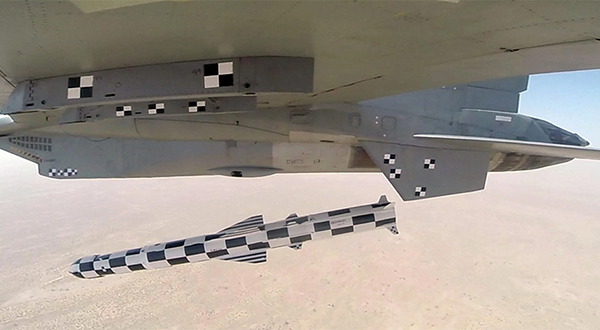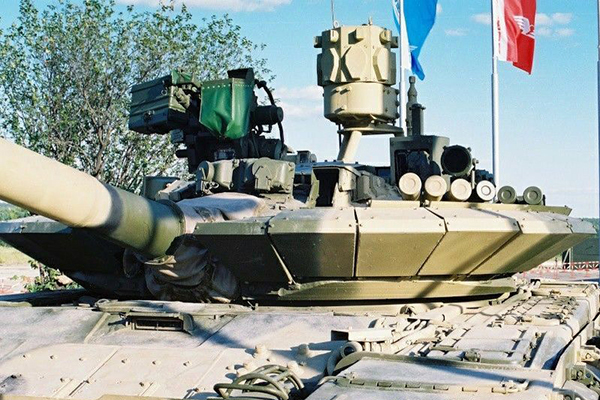AI will be incorporated in future platforms: DRDO Chief
Artificial intelligence (AI) will have a major role in defence technology and all defence platforms to be developed by the Defence Research and Development Organisation (DRDO) in the future will make use of AI, said DRDO chairman and secretary of department of defence research and development (DD R&D), G Satheesh Reddy, addressing media persons on 15 April.
“DRDO’s priority is to become a leader in developing advanced technologies. AI has been introduced in all DRDO labs and it will be part of every system that comes out of DRDO in future. India is one among the few nations that have successfully developed and demonstrated anti-drone technology. The armed forces and security agencies have started placing orders to get the systems installed for them. Lot of trials too are underway with regard to anti-drone technologies,” Reddy said.
Extended Range Brahmos tested from SU-30 MKI
India, successfully fired the Extended Range Version of BrahMos Air Launched missile from Su-30 MKI fighter aircraft on 12 May. It was the first launch of Extended Range version of BrahMos missile from Su-30MKI aircraft. With this, the IAF has achieved the capability to carry out precision strikes from Su-30MKI aircraft against a land/ sea target over very long ranges. The extended range capability of the missile coupled with the high performance of the Su-30MKI aircraft gives the IAF a strategic reach and allows it to dominate the future battle fields.
DRDO to get Kilo Submarine for research
DRDO will get a Kilo-class submarine from the Indian Navy to test the Electric Propulsion motor, Li-ion battery, AIP, and other Technologies. This sub will be used as a research vessel for the development of next-generation systems and components for the development of 12 indigenous submarines. These submarines will go into manufacturing in 2030.
Formalities are being a workout for the transfer of a Kilo-class submarine that will be drydocked to be used as a test platform for the testing of the prototype Lithium-Ion battery system with a Battery Management system (BMS) to validate its energy output and various discharge rates.
DRDO’s AIP technology is based on a Phosphoric Acid Fuel Cell that already has been demonstrated on a land-based prototype and DRDO had proposed Navy to loan them a Kilo-class submarine to be used as a research vessel for the AIP system but now it might be fully converted into as a research vessel for many of the systems. Indigenous 5MW Electric Propulsion motor might be next in line to be used for further experimenting with the propulsion system.
ARDE & L&T working on Pinaka-based anti-submarine rocket
ARDE and L&T are working on a Pinaka based extended range anti submarine rocket. L&T will soon start the integration of Extended Range Anti-submarine Rocket on a new launch platform.
The Armament Research & Development Establishment (ARDE) in association with the High Energy Materials Research Laboratory (HEMRL) has developed an extended range anti-submarine rocket (ASR) with a maximum range of 8.5km for the Indian Navy. Both laboratories are under the DRDO.
ARDE had recently demonstrated a new rocket technology to the Navy, who have issued a set of qualitative requirements to be achieved during the agency’s internal trials.
Currently, the navy has vintage Russian rocket RGB-60 with a maximum range of 5.3km, which is an unguided area weapon for combating submarines. These rockets are fired from the RBU-6000 rocket launcher, which is fitted on-board certain Indian Naval Ships including the R-Class, Delhi Class and Talwar Class of Navy ships.
The Indian navy wants an extended range anti-submarine rocket which can engage an enemy’s submarine from a distance of 8km.
IAF, Navy tie up with DRDO to acquire CHAFF
The Indian Air Force and the Indian Navy have tied up with the DRDO to get the CHAFF technology, which protects the warship from an anti-ship missile during hostilities. India is now the second country after the United States to develop this ability.
The developed assumes significance as the Indian navy is currently studying the sinking of Russian missile cruiser Moskva and focusing on how to protect our warships from anti-ship ballistic missiles like the Chinese DF-21.
In simple words, CHAFF is a critical defence technology used to protect fighter aircrafts or naval ships from enemy radar-guided missile during war. The significance of this technology lies in the fact that very less quantity of CHAFF material deployed in the air acts as a decoy to deflect enemy’s missiles to ensure safety of the fighter aircraft or naval ships.
The DRDO has developed this advanced CHAFF technology to defend naval ships and fighter aircrafts against modern day broadband (including high frequency) radar threat.
Developed by the DRDO, the technology includes all three variants of CHAFF rockets namely Short Range Chaff Rocket (SRCR), Medium Range Chaff Rocket (MRCR) and Long Range Chaff Rocket (LRCR), and have been inducted in the Indian Navy after successful user trials.
The DRDO has also developed advanced CHAFF cartridge-118/I for the Indian Air Force.
LRDE working on active protection system for MBTs
LRDE has initiated work on Radar units of active protection system for Next Gen Tanks.
The present population of T90 tks is qty 1074 and will reach qty 1193 by Sep 2020. By the end of 14th plan the total population of tank T-90 will be 1,657 and this equipment will be the mainstay of the Mechanised Forces up to 2040-50. Tanks T-90s are presently devoid of an Active Protection System and only equipped with ERA panels which provide limited survivability in present battle field scenario.
A requirement has been felt to acquire a Active Protection System capable of not only detecting an ensuing attack but also defeating it, thereby enhancing own survivability.
An active protection system is designed to prevent anti-tank missiles/projectiles from acquiring and/or destroying a target.
Electronic countermeasures that alter the electromagnetic, acoustic or other signature(s) of a target thereby altering the tracking and sensing behaviour of an incoming threat (e.g., guided missile) are designated soft-kill active protection measures (“SKAPS”).
Measures that physically counterattack an incoming threat thereby destroying/altering its payload/warhead in such a way that the intended effect on the target is severely impeded are designated hard-kill active protection measures (“HKAPS”).
DRDO issues guidelines on free access to patents
Over two years after the DRDO modified its Intellectual Property Rights (IPR) policy to grant the Indian industry royalty-free access to patents held for technologies developed by it, detailed guidelines on the subject have been issued.
The new rules stipulate that a license for the patent will be given initially for a period of five years based upon the manufacturing capacity. The number of licenses issued to a single firm shall not be more than five and can be renewed after five years depending upon compliance of the license agreement and other defined factors.
DRDO has also expanded the eligibility scope for licensees by including a clause stating that the applicant shall be a manufacturing entity or a system integrator and not a trading company. None of the promoters and directors of the applicant entity should have been wilful defaulters.
Applicants would be required to provide all necessary documentation including details of projects and supply orders successfully executed in the last two years, details of shareholders, promoters, associated firms and joint venture companies if any, as well as details of any vigilance actions, on-going investigation or suspension or blacklisting of the entity or any of its associates.
To boost indigenous production and give a fillip to the ‘Make in India’ policy, DRDO had, in November 2019, decided to grant free access to patents held by it to an Indian company, startup or MSME incorporated as per law. A DRDO screening committee would review the requests for licenses by taking into account the applicant’s financial and technical capabilities as well as national security and strategic implications.
Under the policy, no licence fee or royalty will be applicable on the use of Indian patents held by the research agency and only a processing fee of Rs 1,000 would be levied. Earlier, licence fee for patents and royalty could range anywhere from several lakh rupees to over a crore depending upon the type of technology involved, the cost of the project, baseline price and post-production quantum of sales to non-defence sector.
There are about 450 patents covering missile technology, aeronautics, naval systems, life sciences, armaments, combat engineering, electronics and communication material, which can be used by the Indian industry for commercial production.
The license for the patent shall be given on non-exclusive basis with DRDO retaining complete title and ownership rights including unfettered rights to license the patents to additional parties.
While the license recipients will be able to manufacture and sell products covered under the patent, they will also be required to submit details about the commercial working of the licensed patent on an annual basis to DRDO, which would be forwarded to the Controller General of Patents, Designs and Trademarks, as mandated by Indian patent laws and rules.



















